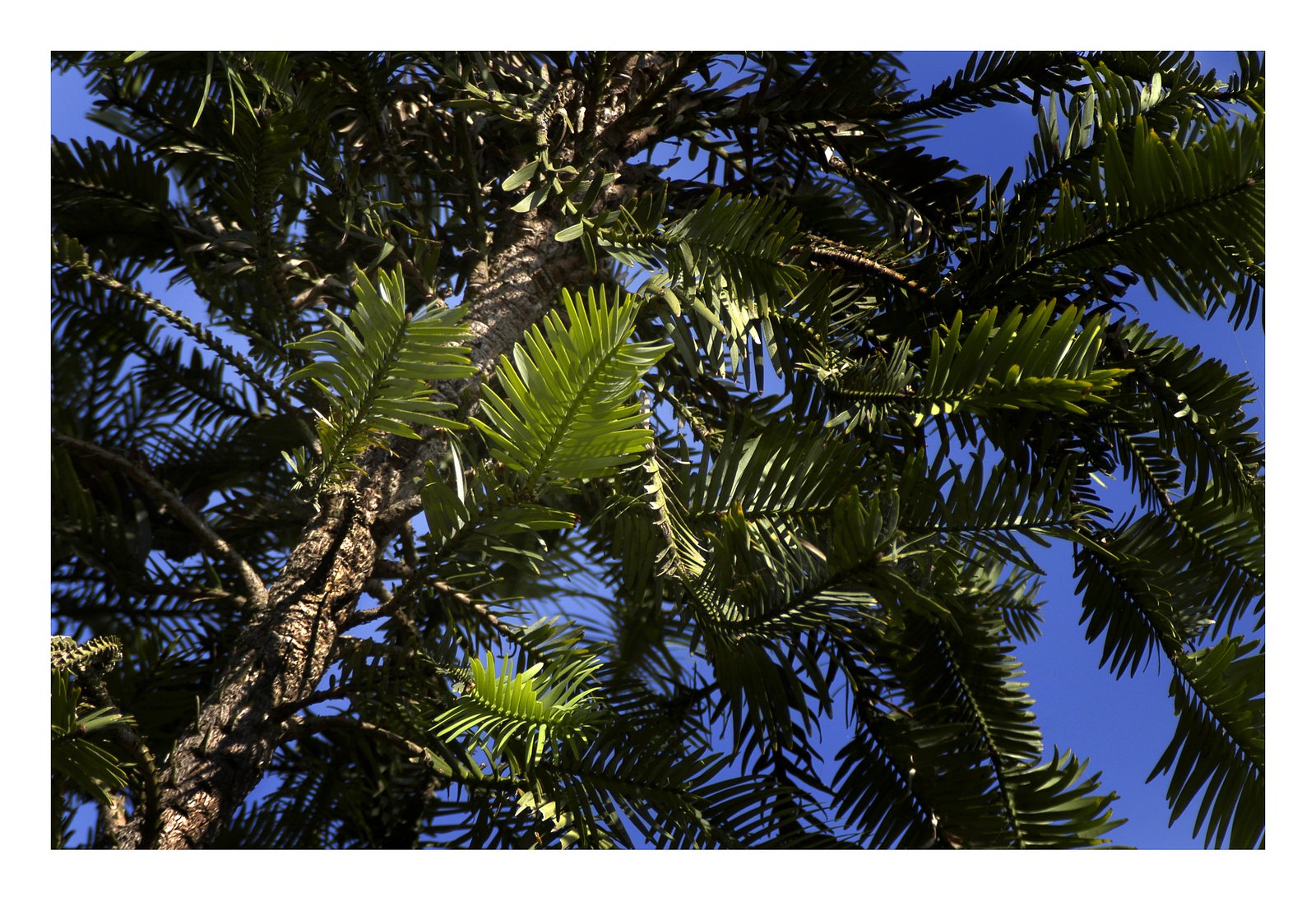Wollemi pine on display
The Wollemi Pine, Wollemia nobilis, was named in honour of David Noble; the National Parks and Wildlife Service Officer who discovered a small stand of trees in a deep gorge in the vast wilderness of Wollemi National Park in 1994. Despite its very fern-like foliage, it was soon classified as a species of conifer, belonging to the family Araucariaceae. There are two living genera within the family, Agathis and Araucaria, however the seed-cone of this new plant did not fit into either, therefore a new genus was created Wollemia and soon after its species name noblis was added to form its scientific name.

© Australian Museum
The Wollemi Pine has a certain prehistoric look, and was beleived to have lived in Australia for a long time. Proof of the plants antiquity came from fossils held in the Australian Museum. One species of fossil plant; Agathis jurassica, (Described by Mary White in 1981) dates to a Jurassic fossil site in Talbragar, New South Wales and has foliage almost identical to those of living Wollemia. Pollen scientists were also able to match the living plants pollen with a variety of fossil pollen prevalent through the sediments of the Jurassic, Cretaceous and through to the last ice age when the species is beleived to have restricted in range due to the drying out of the Australian continent.

© Australian Museum
The Wollemi Pine may be the single greatest botanical discovery of the 20th Century, however was also one of the most endangered species of plants in the world with only a handful of adult specimens known to exist in the wild. Numerous government agencies have worked together to protect the species and one way has been to cultivate the trees and make them available to the worlds gardeners. This protects the wild pines in three ways; firstly the funds raised through selling the plants goes towards studying and protecting the wild stock. Secondly, the cultivated plants act as an insurance population in case the wild trees suffer another decrease in population. Lastly, having plants legally available prevents black market collectors from having to find and plunder the wild stock. The initial efforts to cultivate the Wollemi Pine were made at the Mount Annan Botanic Gardens and are now available for sale in many garden nurseries.
Further Reading
Woodward, J. 2002. The Wollemi Pine. Text Publishing. Melbourne.
Official website of the Wollemi Pine www.wollemipine.com







